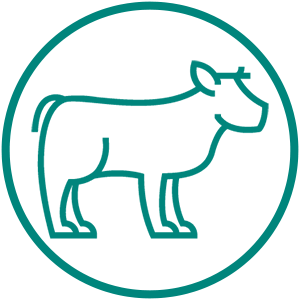
Tetanus

Disease Overview
The bacterium Clostridium tetani, found in the soil and guts of animals, causes tetanus. This can be found in all ages of horses and cows.
Clinical Signs
Signs of tetanus become apparent within several days to several weeks, depending on how close the contaminated wound is to the central nervous system. The extensor muscles of the jaw are often affected, leading to the common name of this disease, lockjaw. Saliva may drip from the horse’s mouth and attempts to eat, or drink may cause regurgitation of food or water from the nostrils. Paralysis and rigidity then progress to the face, neck, trunk, and legs. The third eyelid may prolapse, the ears may be held erect and rigid, and the nostrils may be flared. Once the limbs become affected, the horse stands with all four legs stiff, in a characteristic ‘sawhorse stance.’ The affected animal reacts violently to external stimuli, such as loud noises or sudden light, and may go into convulsions.
Other possible signs of tetanus include profuse sweating, colic, and difficulty in walking and breathing. Laminitis and pneumonia may develop as secondary complications. After treatment has begun, clinical signs may persist for up to six weeks, and muscle spasms may occur for weeks to months before full recovery. If death occurs, it is usually due to respiratory failure. Generally, about 80% of affected horses die.
